In this article, We are going to cover Loops in Python with Examples, Break Statement in Python, Continue Statement in Python, Pass Statement in Python, range() function in Python, for-else loop in Python.
Table of Contents
Loops in Python with Examples
#1: For Loop in Python
In simple language for loop is a programming language statement which allows code to be repeatedly executed. For loop execute a sequence of statements multiple times and abbreviates the code that manages the loop variable. For loop is a control flow statement for specifying iteration. Which allows code to be executed repeatedly.
Syntax:
for var in sequence:
#statementExample of for loop in python:
x = ["FOSSTechNix"]
for y in x:
print(y)Output:
FOSSTechNix
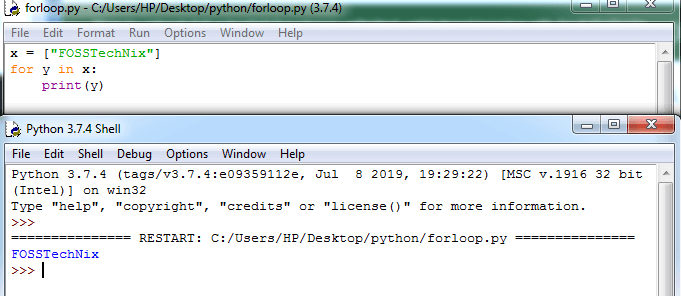
Another Example of for loop (string) in Python
s = "FOSS"
for i in s :
print(i) Output:
F
O
S
S
num = [2,3,5,7,0,2,9,1]
addition = 0
for var in num:
addition = addition + var
print("The addition is", addition)Output:
The addition is 29
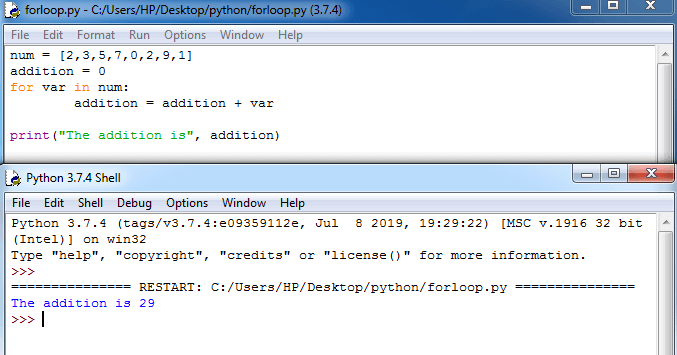
Loop Control Statements in Python
Python supports following control statements
- Break Statement
- Continue Statement
- Pass Statement
#1: Break Statement in Python
Break condition is used to terminate the loop when a certain condition is met. The break statement is used a for loop. The break statement in python terminates the current loop ans resume execution at the next statement. Break statement can be used in both for and while loops. The break keyword is used to out a for loop.
Syntax:
break
Example of break statement in Python
for s in "FOSSTechNix":
if s == "T":
break
print(s)
print("The end")Output:
F
O
S
S
The end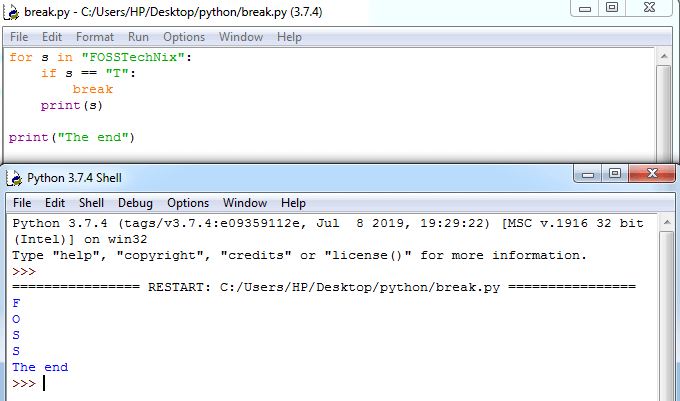
#2: Continue Statement in Python
In continue Statement we can stop the iteration and continue. Continue statement is opposite to break statement This statement is used to skip the rest of code inside a loop and execute the next iteration of the loop. This loop does not terminate and continue with next iteration.
Syntax:
Continue
Example of continue statement in Python:
for s in "Python":
if s == "t":
continue
print(s)
print("The end")Output:
P
y
h
o
n
The end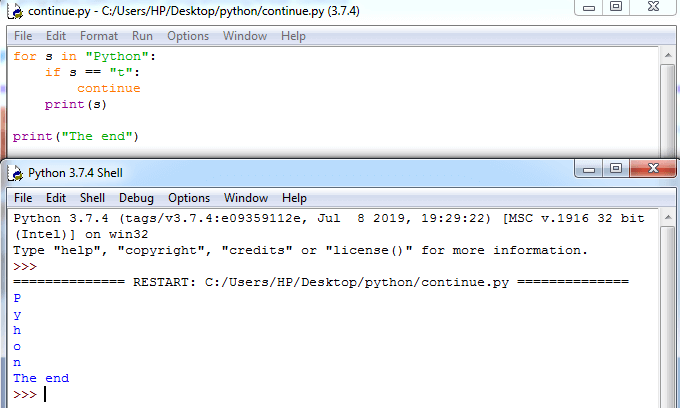
#3: Pass Statement in Python
The pass statement is a null statement. Pass statement is generally used as a placeholder. Pass is used to when we don’t want execute any code, so simply places pass at that line. Difference between pass and comment comment is ignored by interpreter and pass is not ignored.
Syntax:
Pass
Example of pass statement in Python:
x = ["FOSSTechNix"]
for y in x:
pass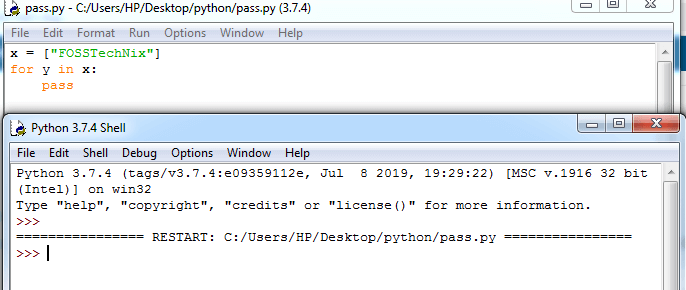
Another example of pass statement in Python:
fruit =['mango', 'apple', 'cherry', 'orange']
for i in fruit:
if(i =='apple'):
pass
else:
print(i)Output:
mango
cherry
orange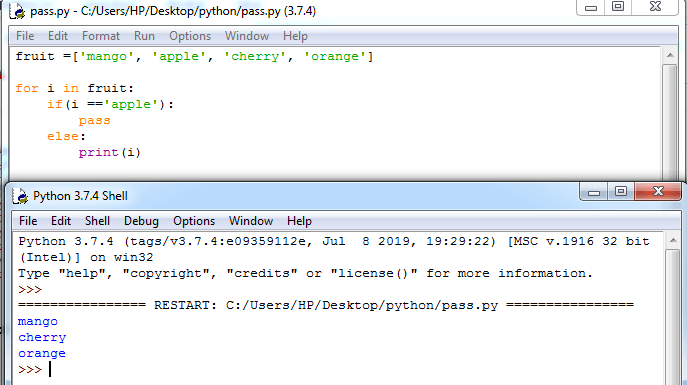
#2: range() function in Python
range function used to perform action for specific number of times. The range() function used to generate sequence. We can define start, stop and step size like range(start, stop, step_size) start from 0 by default, step_size increments 1 by default and ends at specific number.
This function remember only start stop and step size and generate the next number. Does not store all values in memory.
Example of range() function in Python:
print(range(8))
print(list(range(8)))
print(list(range(2, 6)))
print(list(range(2, 18, 2)))Output:
range(0, 8)
[0, 1, 2, 3, 4, 5, 6, 7]
[2, 3, 4, 5]
[2, 4, 6, 8, 10, 12, 14, 16]
Another Example of range() function in Python:
for num in range(4):
for i in range(num):
print(num, end="")
print("\n")Output:
1
22
333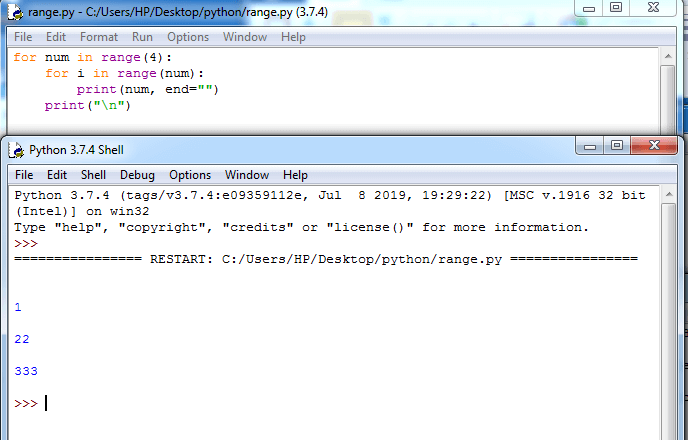
#3: for-else loop in Python
In this for-else loop there is keyword break can be used to stop a for loop. Some cases else part is ignored. else block after for is executed when the loop is not end with break statement.
Example of for-else loop in Python:
for s in range(1, 5):
print(s)
else:
print("No Break")Output:
1
2
3
4
No Break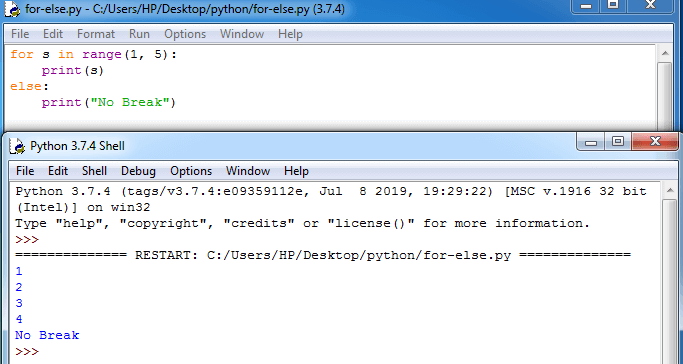
Another Example of for-else loop:
for s in range(1, 5):
print(s)
break
else:
print("No Break")Output:
1
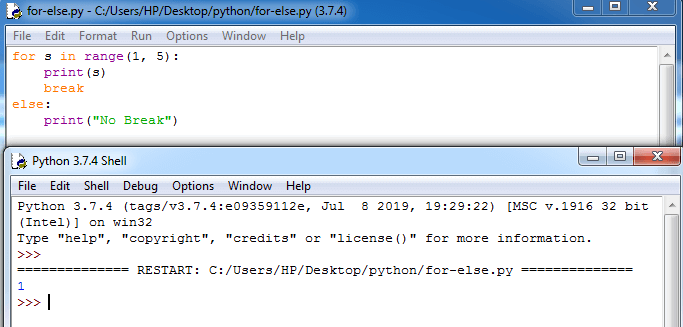
We have covered Loops in Python with Examples.
Conclusion:
We have covered Loops in Python with Examples, For Loop in Python, Break Statement in Python, Continue Statement in Python, Pass Statement in Python, range() function in Python, for-else loop in Python.
Related Articles:
While Loop in Python with examples
7 Python Operators with Examples
Python Introduction for Programmers [Part 1]
6 Python Conditional Statements with Examples
Functions in Python with Examples
classes and objects in python with examples
Reference:

Nice information dear